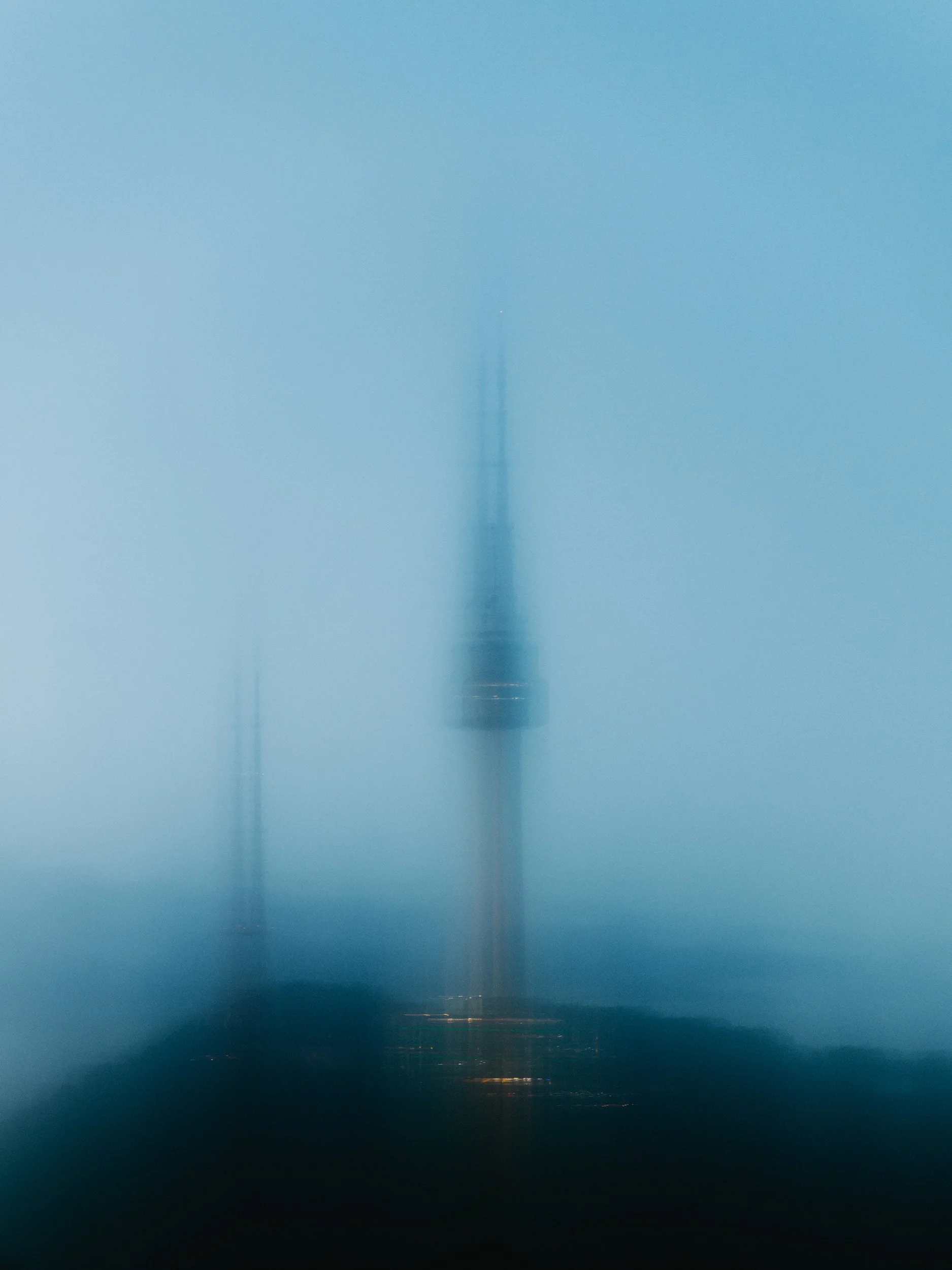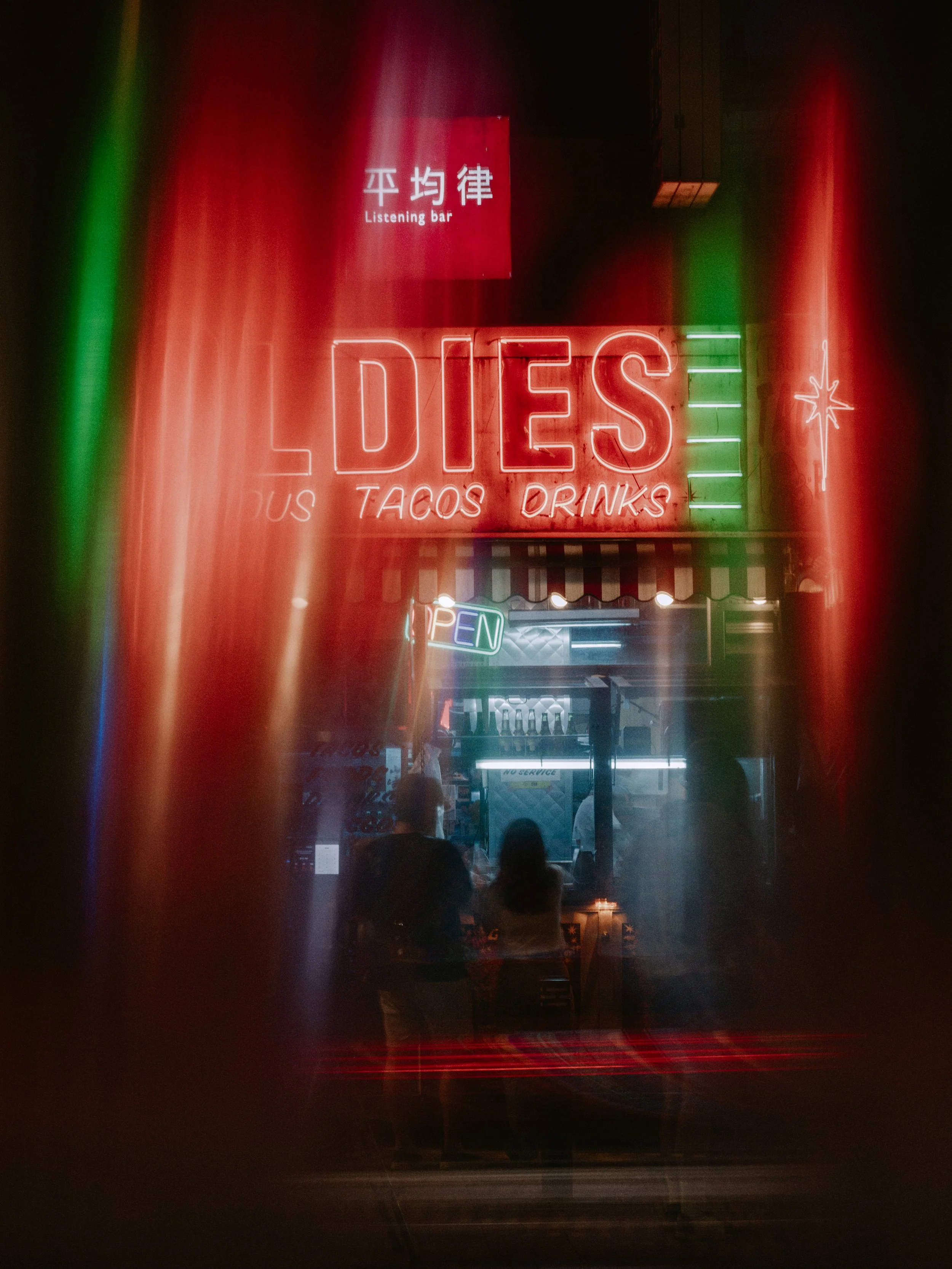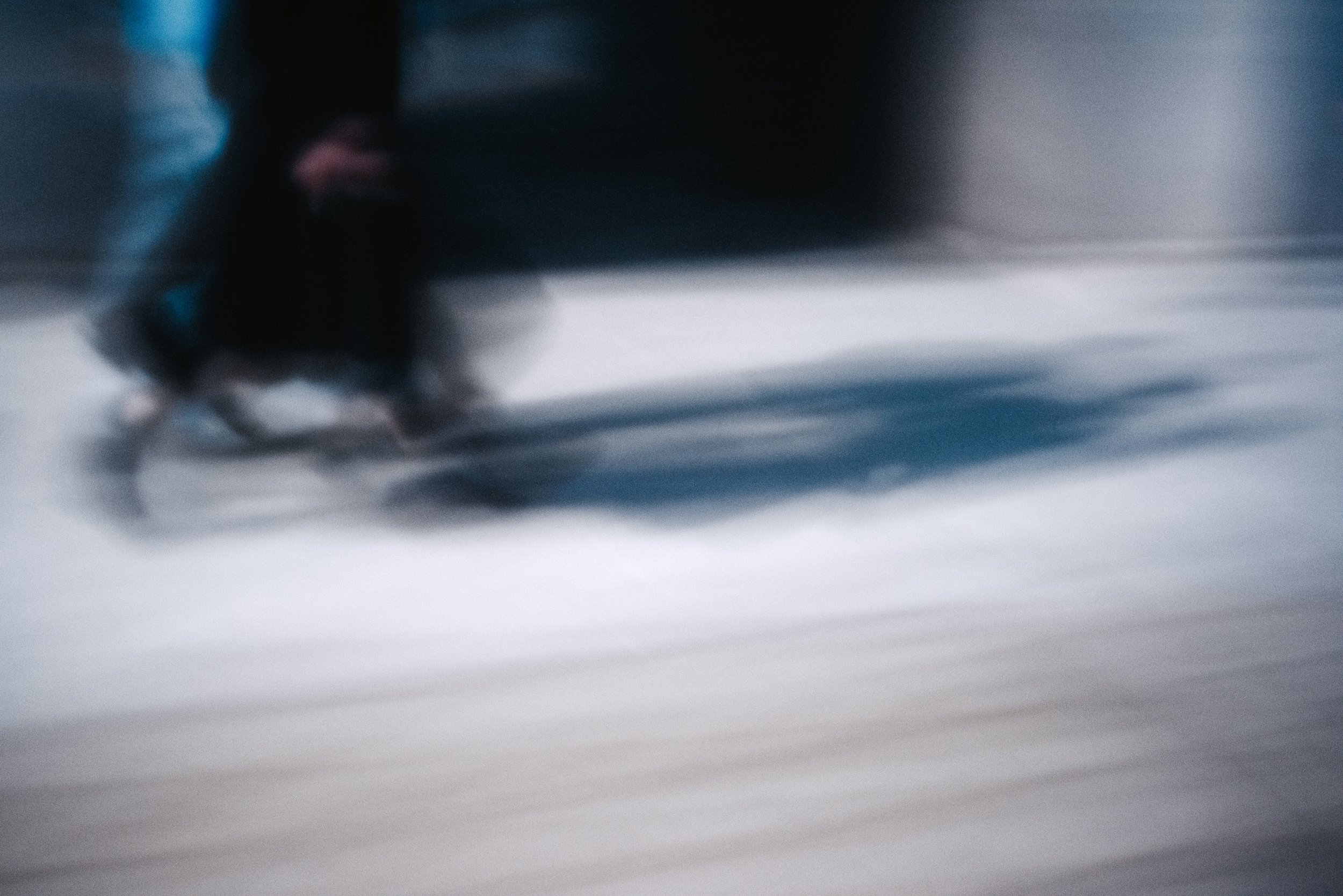Le Voyageur
사진에는 여러 측면이 있습니다. 사진은 있는 그대로를 보여주기도 하지만, 언어를 대신하여 사람과 사람 사이를 연결해 주기도 합니다. 뿐만 아니라, 사진은 시각적 이미지의 형태로 된 창작이기도 합니다. 카메라가 없으면 존재할 수 없는 창작물이죠. 이런 제한 조건을 가지고 있지만, 예술의 한 형태로서 모든 종류의 사회학적, 도덕적, 역사적 질문들을 제기할 수 있는 자리를 차지하고 있습니다. 1)
이처럼 사진은 단순한 시각적 기록을 넘어 의미를 담을 수 있는 예술적 매체입니다. 수전 손택은 Photography within the Humanities에서 사진작가들이 배우는 두 가지 방법에 대해 이야기 했습니다. 사진작가들은 도구와 재료에 대해 세심하게 이해하는 것으로 배움을 얻고, 그 다음 다른 사진작가들이 찍은 사진으로부터 배웠다고 합니다. 그녀는 이러한 끝없는 영향의 흐름 속에 스스로를 표현하고 있는 것이 바로 사진들이었다고 합니다. 또한 그녀는 한 사진작가가 상업 사진에 관심이 있든 예술 작품에 관심이 있든, 그들의 마음속에 깊은 인상을 남긴 이미지들을 통해 그들만의 사진 전통이 형성된다고 말합니다. 2)
카메라와 함께 서울 거리를 다닐 때면, 많은 사람들이 바쁘고 치열하게 살아가는 현실적인 공간으로 먼저 다가옵니다. 저는 그곳들을 관찰하며 ‘한(恨)’의 미학이 발견되는 순간을 탐구하게 됩니다. 가끔은 몸과 마음이 긴장감에 떨리기도 하고, 어두운 밤거리의 네온사인과 어둠속의 폭력적인 분위기에 휩싸여 정처없이 돌아다니기도 합니다. 이처럼 저는 관찰자로서 그 곳에 위치하고 있지만, 때로는 미궁에 빠져 홀로 남겨진 것처럼 세상을 바라보는 내면의 관점이 혼란스러울 때도 있어요. 그럴때는 스스로 위로하듯 여행자로서 거리를 서성이기도 합니다. 그리고는 이런 현실적인 공간을 벗어나면 세상이 보여줄 또 다른 모습은 어떨까 하는 호기심이 생길 때가 있습니다. 어쩌면 미완성된 도시가 있을지도 모른다는 생각을 하게 되는 것이죠. 때론 흐릿한 사진 속에서 더욱 선명한 이미지의 형태를 발견하듯, 미완성되고 망가진 도시 속에 아름다움이 숨어 있는 것은 아닐까요?
늘 그렇듯 이런 고민이 시작되면, 부족하다고 느껴지는 부분을 채우기 위해 저에게 많은 영향을 주는 사진작가들의 작품, 인터뷰, 그들이 지닌 철학을 찾아보면서 배우게 됩니다. 그 중 존경하는 패션 사진작가 파올로 로베르시는 인터뷰에서 다음과 같은 이야기를 했습니다.
“저는 항상 아름다움을 추구합니다. 이건 확실합니다. 아름다움은 언제나 저를 완전히 매료시키고, 무언가를 찾아 멀리 나아가게 합니다.”, “사진작가가 장시간 노출을 사용했을 때 피사체의 표정이 더 깊고, 더 감동적이며, 더 인간적으로 느껴지는 이유를 기술적으로 설명할 수는 없지만, 실제로 그렇습니다. 사진작가들이 장시간 노출을 사용해야 했던 초기 사진들을 연구하면서 이 사실을 배웠습니다. 인물 사진은 훨씬 더 깊이 있게 보였습니다.”, “누구나 어떤 빛, 광원을 사용할 수 있지만, 빛의 감정을 포착하는 것은 그렇게 쉬운 일이 아닙니다.” 3)
“가장 중요한 순간은 셔터를 여는 순간입니다. 마음을 여는 것과 같습니다. 무언가를 받고 무언가를 주는 순간입니다. 기술적으로 설명할 수는 없지만, 이 순간에 감정을 살지 않고, 당신과 피사체 사이에서 에너지가 전달되지 않으면 그 사진은 지루할 것이라고 생각합니다. 당신이 훌륭한 사진작가라면, 이런 에너지나 정신, 또는 매력이 있다면, 그것은 사진 속에 있을 것입니다. 저는 항상 제 사진에 제 자신을 많이 담으려고 노력하고, 최대한 개인적인 사진으로 만들려고 노력합니다. 마치 편지를 쓴다면 제 자신을 담은 무언가를 담는 것과 같습니다.”, “저에게는 항상 초상화입니다. 이 컵을 찍으면 이 컵의 초상화이고, 찻주전자를 찍으면 찻잔의 초상화입니다." 항상 인물 사진이고, 항상 나와 피사체 사이의 관계입니다.” 4)
그는 또한 스튜디오 문을 닫을 때 논리적이고 합리적이며 기술적인 모든 것을 뒤로하고, 오직 꿈과 시, 그리고 상상력만이 스며든다고 말했습니다. 5) 저 역시 이 프로젝트를 통해, 저만의 또 다른 사진 언어를 찾아내고 더 개념적으로 발전시킵니다.
1) Susan Sontag, On Photography, ewhobook (2005) (Original published : 1977)
2) Susan Sontag, PHOTOGRAPHY WITHIN THE HUMANITIES, Symposium, Wesleyan College (1975)
3) Susan Reich, Interview PAOLO ROVERSI, PHOTOGRAPHER (2016)
4) Diane Smyth, Paolo Roversi on photography, British Journal of Photography (2017)
5) Jonas Tebib, Leaving Logic at the Door: Paolo Roversi’s Studio of Dreams, Sotheby’s (2021)












